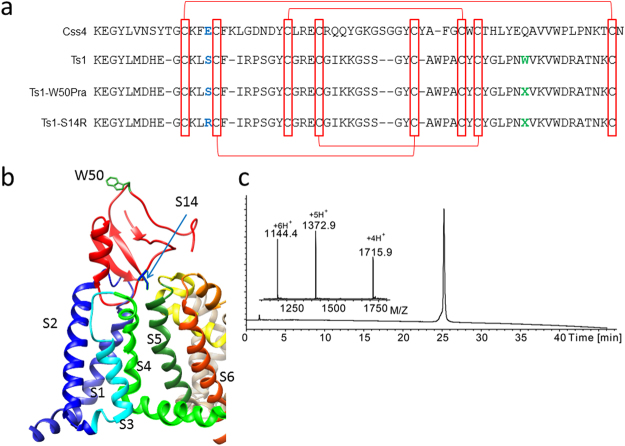Figure 1.
Synthetic Ts1-derivatives. (a) Sequence alignment of Css4, Ts1, and our synthetic Ts1-derivatives: Ts1-W50Pra and Ts1-S14R. Red rectangles and red lines indicate conserved cysteine residues which form disulfide bonds. S14 in Ts1 is the position where we introduced the arginine substitution as highlighted in blue, and W50 in Ts1 is the position where we introduced the L-propargylglycine (Pra: X) substitution highlighted in green. (b) Schematic representation of the Ts1 toxin interaction with the Nav channel. The structure of Ts1 cited from the Protein Data Base (PBD) #1NPI. Here, we used one domain of NavAb, a prokaryotic Nav channel from Arcobacter butzleri cited from PDB #4EKW as the structure of Nav channel. Drawing by the authors using a graphical picture obtained from PDB, based on the model proposed by Zhang, J. Z. et al.14,15 (not generated by molecular dynamic simulation). (c) Analytical LCMS data for Ts1-S14R; Calc. 6859.9 Da (Average isotope), Obsd. 6859.8 ± 0.2 Da.

